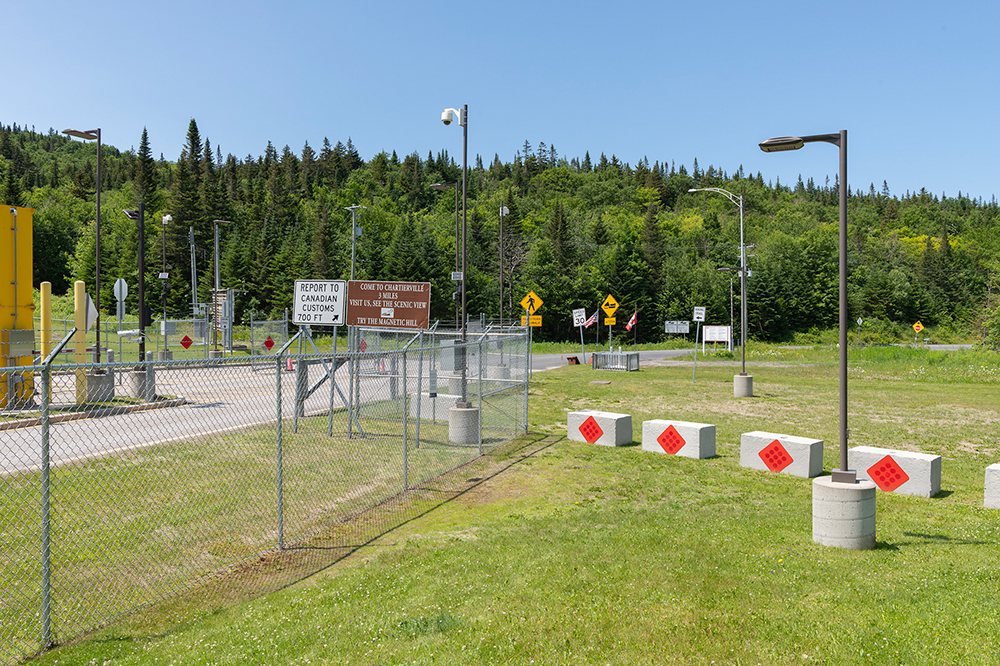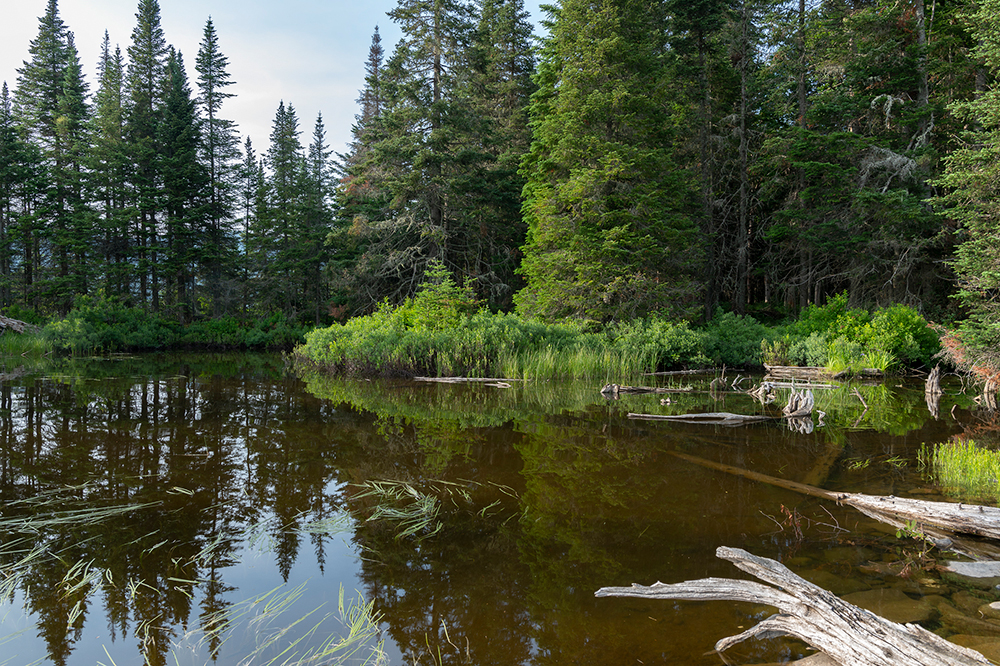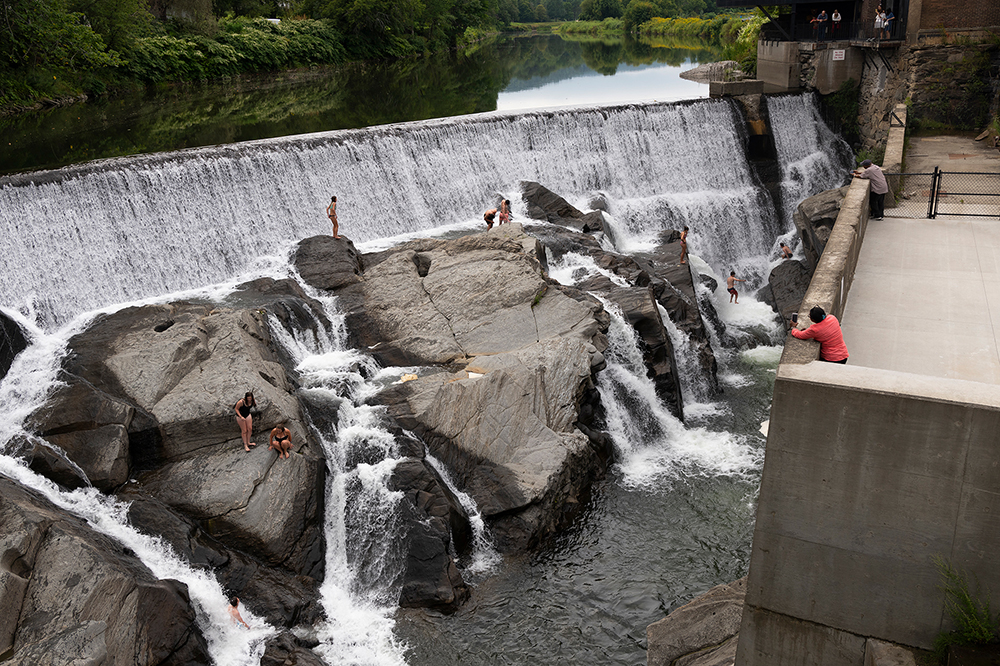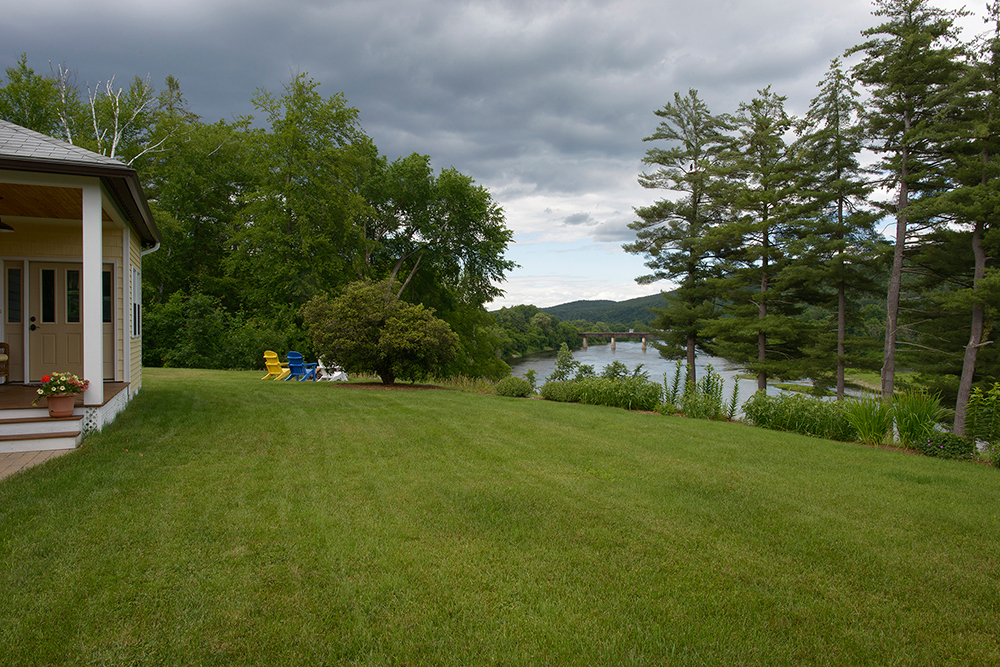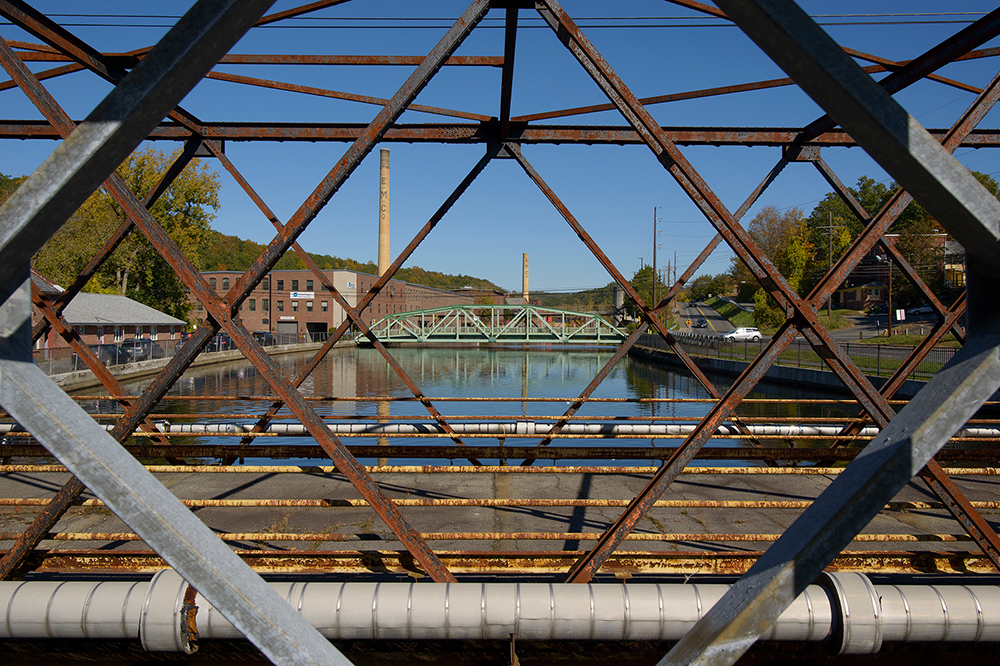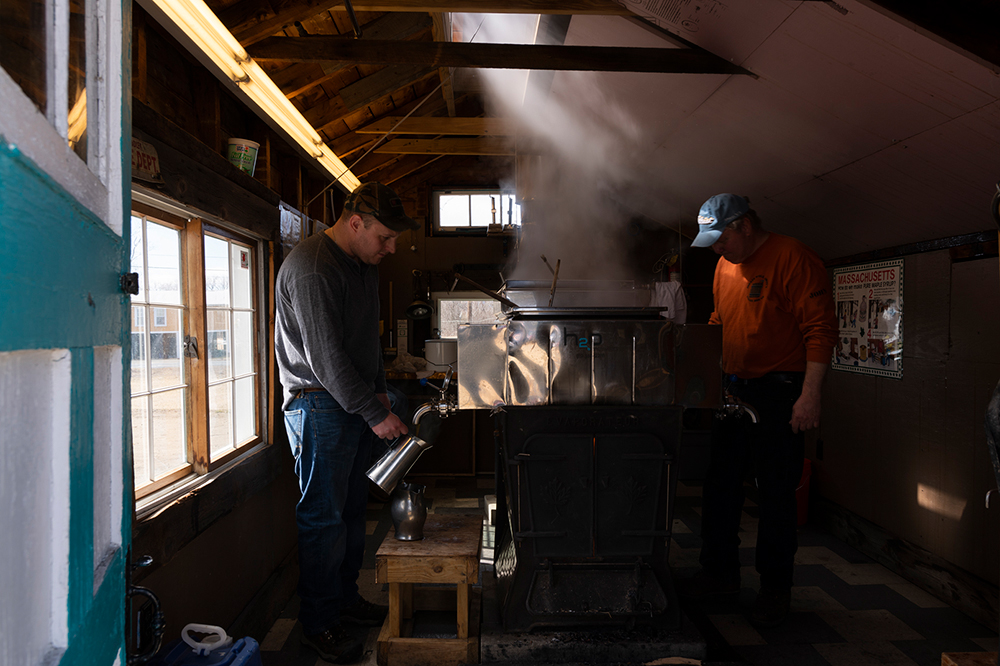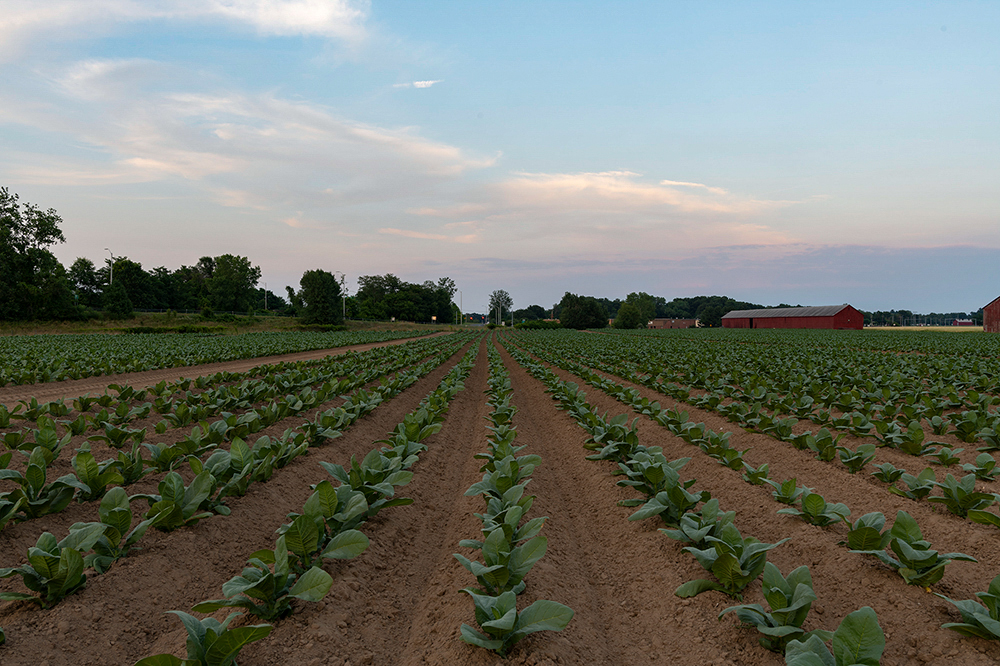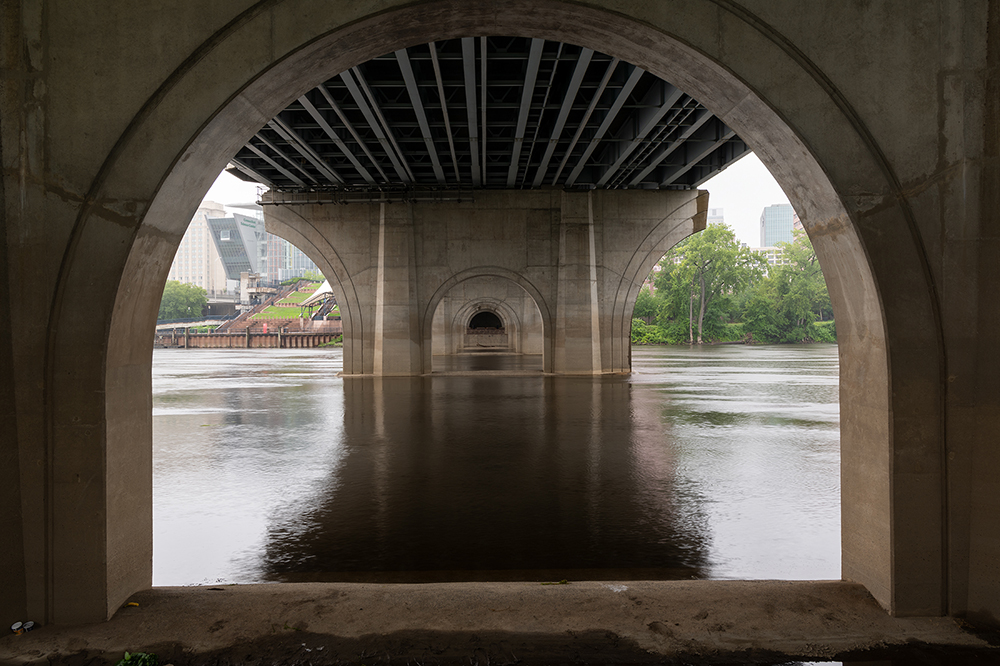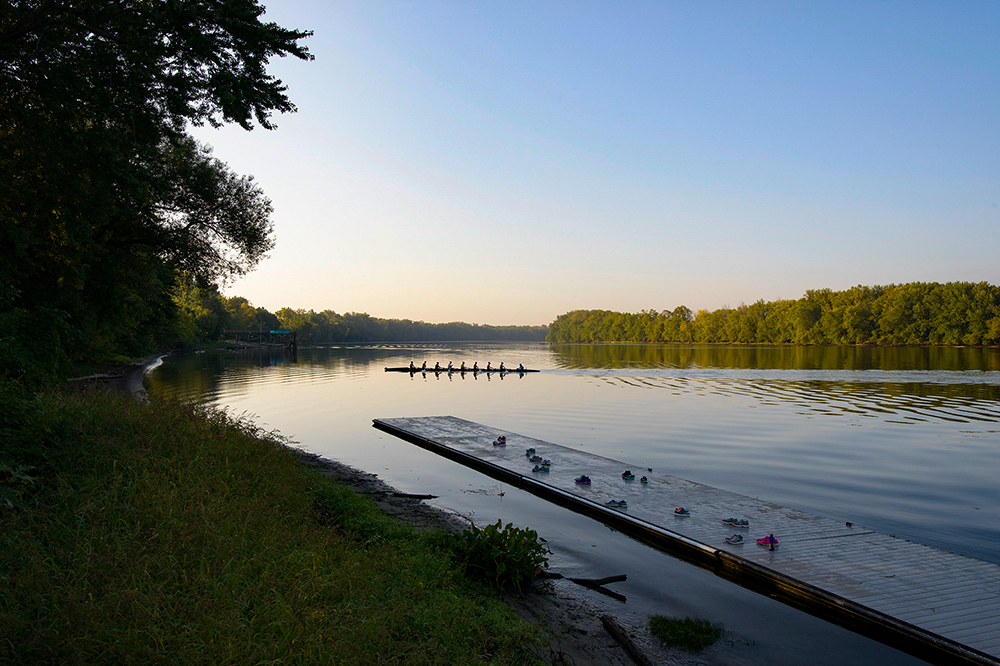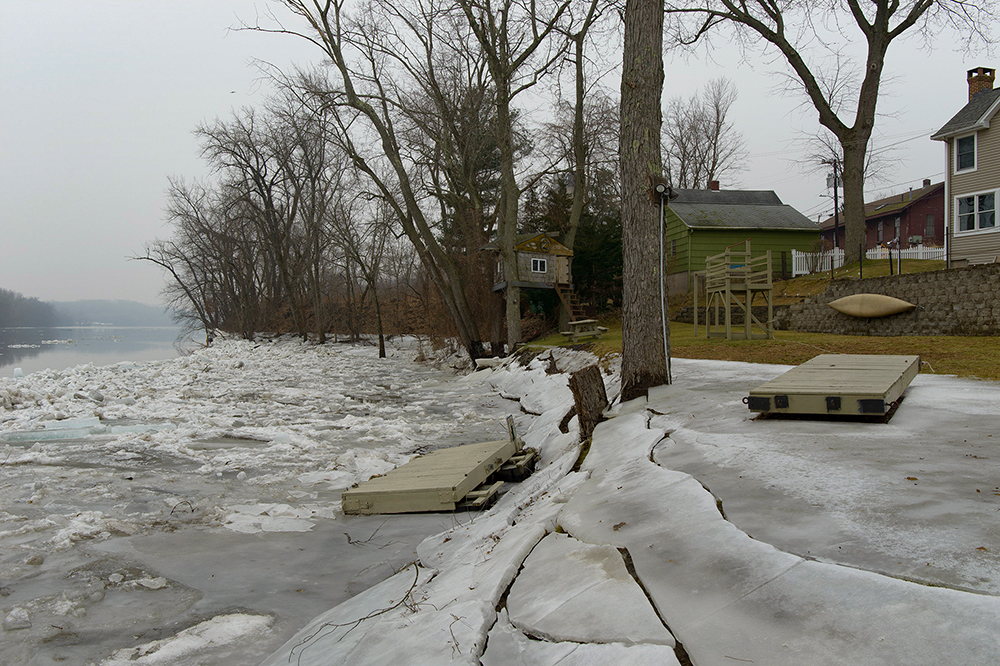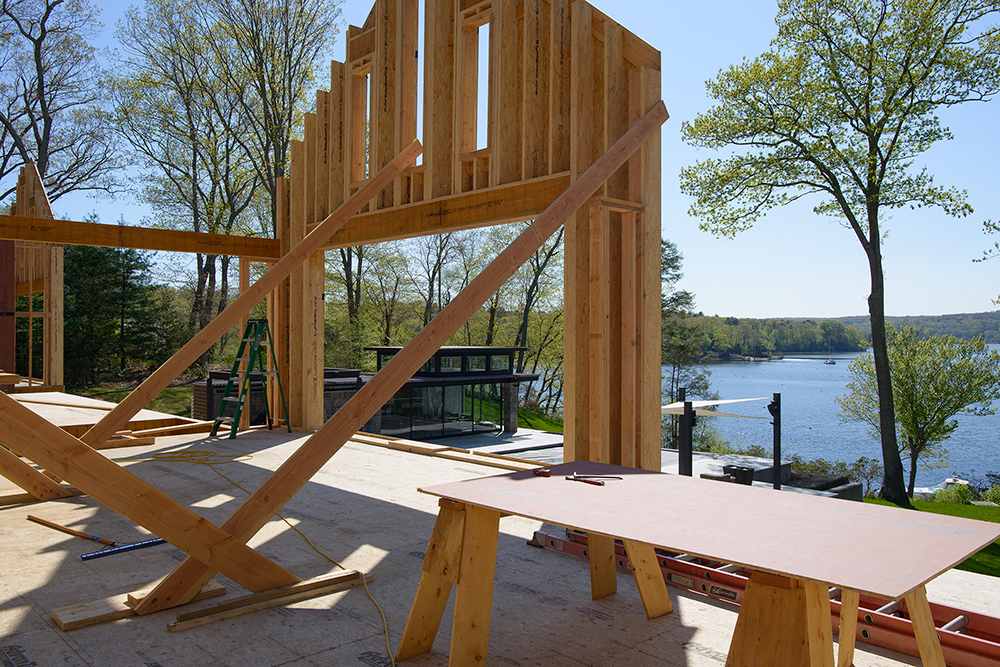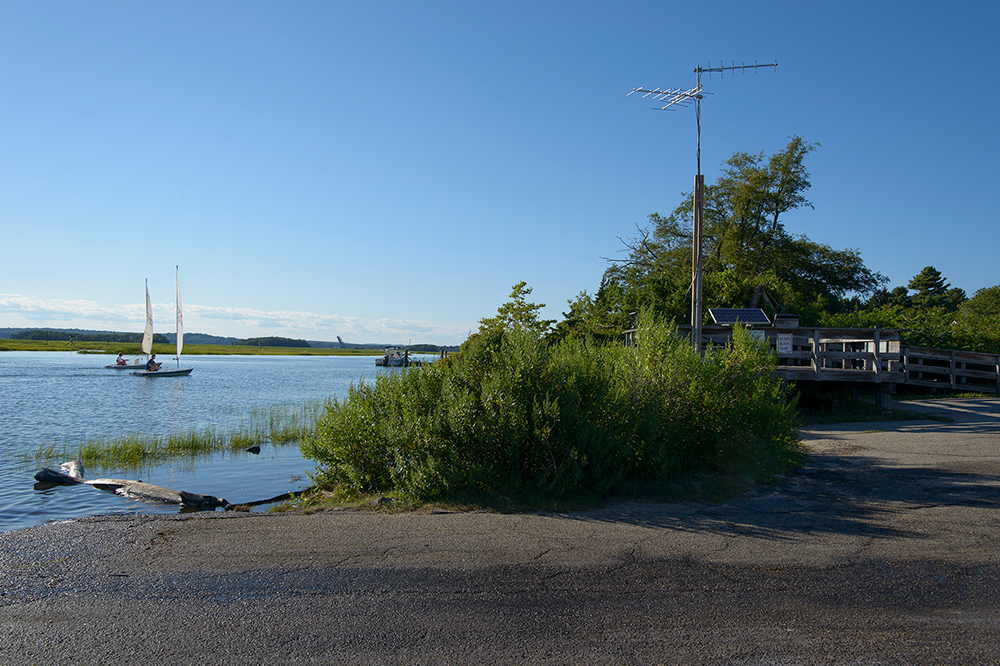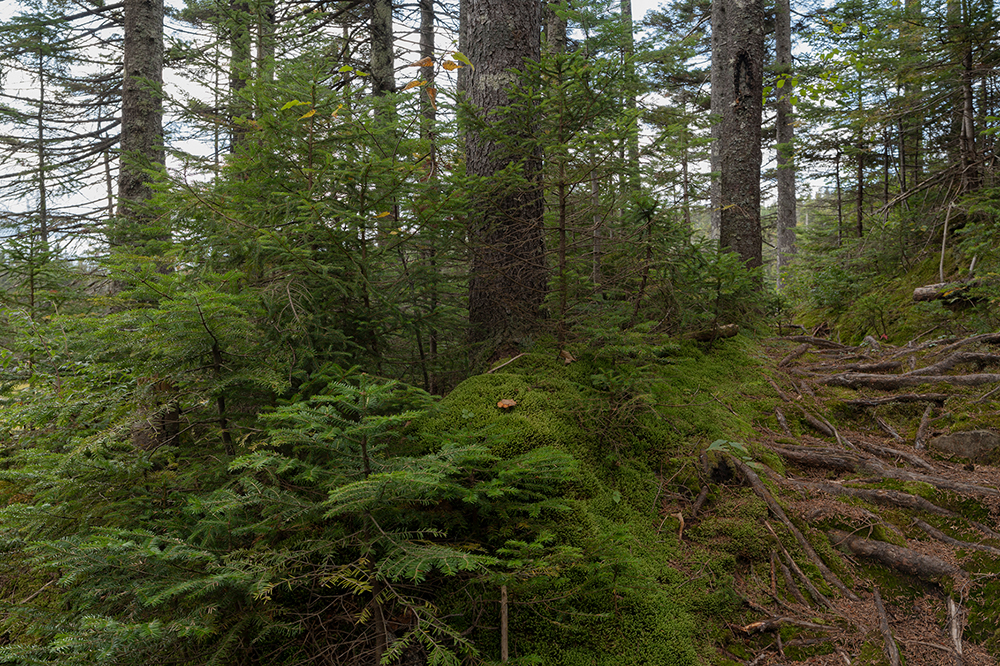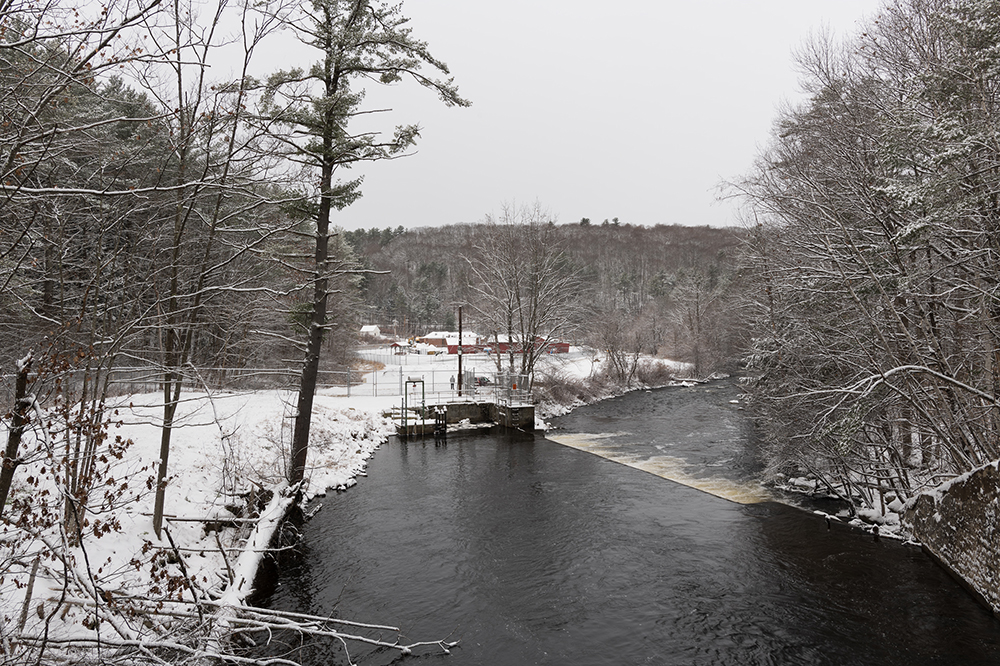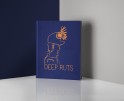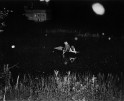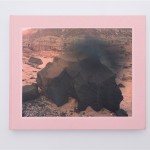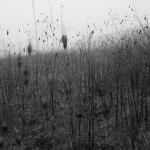Janet Pritchard: More than a River: the Connecticut River Watershed
More than a River: the Connecticut River Watershed by Janet Pritchard was selected from our most recent call-for-submissions. I was pleased to interview Janet to gain further insight into this body of work.
Before pursuing a career in photography, Janet L. Pritchard worked as an outdoor education instructor and spent her youth traveling between the Northeast and Rocky Mountain West. She describes herself as geographically bilingual and her early experiences led to an awareness of deep regional differences within the United States. She devised a methodology described as historical empathy, which relies on archival materials to guide her depictions of complex landscapes as expressions of time and place, while she works at the intersection of nature and culture.
In her current project More than a River: the Connecticut River Watershed, she photographs the Connecticut River landscape as a complex set of interconnected systems where present bumps up against past in telling ways. She relies on history and science for greater understanding. Her earlier work includes More than Scenery: Yellowstone, an American Love Story, which views the world’s first national park through the lenses of nature, culture, and history, and Dwelling: Expressions of Time, which evokes layers of time, human and geologic, found in the landscape of southern New England. The Yellowstone project is currently scheduled for publication in fall 2020 by George F. Thompson Publishing.
She has received a number of honors and awards: John Simon Guggenheim Foundation Fellowship; Connecticut Office of the Arts Artist Fellowship; The American Antiquarian Society’s Jay and Deborah Last Fellowship; National Endowment for the Humanities Summer Scholar, Smith Center for Cartography, Newberry Library; Artist-in- Residence fellowships at Jentel Foundation, Institute for Electronic Arts at Alfred University, Millay Foundation, Ucross Foundation, and the Vindolanda Trust; UConn Research Excellence Program awards; and UConn Research Excellence Program awards, School of Fine Arts Research Grants, and Humanities Institute Fellowship. Her exhibition venues include: Philadelphia Museum of Art; RISD Museum, Providence; Fruitlands Museum and New Bedford Art Museum, Massachusetts; Fraction Magazine; FlakPhoto; Lenscratch; International Center for Photography, New York; Martha Schneider Gallery, Chicago; Photographic Resource Center, Boston; and the National Trust for Historic Preservation traveling exhibition America’s Uncommon Places.
Pritchard is Professor, Area Coordinator, and Graduate Advisor in Photography at the University of Connecticut. She also has taught at Tyler School of Art, School of the Art Institute of Chicago, University of Colorado (Boulder & Denver), and University of New Mexico. Pritchard received her B.A. in art history, classics, and philosophy from the University of Colorado, and her M.A. and M.F.A. in photography from the University of New Mexico.
More than a River: the Connecticut River Watershed
More than a River: the Connecticut River Watershed is a photographic project about a river and how it shapes life. The 410-mile main stem of the Connecticut River gathers water from a 7.2 million-acre catchment basin. The river’s source lies near the Canada-U.S. border in Fourth Connecticut Lake. Fourteen miles later, the low-water mark on the western bank defines the boundary between New Hampshire and Vermont. Continuing south it bisects Massachusetts, then Connecticut, and empties into the Long Island Sound. Over human time it has proved a resource for water, fishing, farming, transportation, manufacturing, and recreation. Writers have described it as the life artery or heart of New England and the cradle of New England culture.
Actress Katherine Hepburn described the river as “the world’s most beautifully landscaped cesspool” in the 1965 documentary The Long Tidal River. This film helped spark interest in the environmental fate of the Connecticut River at a time when advocates for many U.S. rivers shared similar concerns. The Clean Water Act of 1972 provided a means for change and contamination from industrial and agricultural pollutants decreased. Birds and fish returned, and today, the river is an environmental success story, although advocacy remains critical for maintaining a healthy ecosystem.
Despite over 30 years of landscape photography, a river project is new for me. A colleague asked: “how is it different photographing a river. My method of historical empathy, looking for the places of intersection between nature and culture, as well as between now and then, using archival materials to guide my search remains unchanged. The difference is in making photographs about the river as a steady presence in constant flux and the daily lives of those who live in its watershed.
Daniel George: How does your background and experience as an outdoor educator inform your photographic work in general, and specific to this project?
Janet Pritchard: My background in outdoor education and all that led up to it informs my work in many ways. When I’m in the field, the ways I move through a place, anticipate photographs, and scout locations are deeply influenced by earlier experiences in the natural world while hiking, canoeing, and mountaineering. My knowledge of safety concerns, reading maps, and previous wildlife encounters come into play as well. I’ve climbed considerable mountains, hiked, and paddled for weeks without signs of civilization, and had close encounters with wild predators. However, while outdoor pursuits and photography both keep me present in the moment as little else, my experiences with photography are significantly different.
In photography, my focus is on the interrelationships of people and places. In my Yellowstone work, I was interested in how people visit the world’s first national park. What is that experience like for visitors? What do they see and do? How do we, as a nation, hold this landscape as an icon? What does cultural memory look like in public and private spaces? What are the resource and management issues? What are the natural history wonders that gave rise to protecting this place? Through my photographic responses to these and other questions, I’ve created a book in three parts, which triangulates a broader picture of Yellowstone than otherwise possible.
In my current project on the Connecticut River, my interests have shifted. Traveling 410 miles north to south, the main stem of the Connecticut River gathers water from a 7.2 million-acre watershed. It begins its journey at the U.S.-Canada border and empties into the Long Island Sound touching four states in all regions of New England along the way. Writers have described the river as the heart of New England and the cradle of its culture. The socio-economic diversity along the course of the river is vast. Although most who live within its sphere of influence spend little time thinking about the river in its entirety, it is one system. The river first caught my attention when we moved to Connecticut in 2001, and I noticed a socio-economic difference across the state east and west of the river. Now I’m photographing my way toward greater understanding.
I also bring my experience as an outdoor education instructor to the classroom. Outdoor education is grounded in experiential learning, which transfers well to teaching photography. When teaching skills, I demonstrate, students do, and we analyze results. Conceptual assignments are not so different. I present a challenge or task through slides, students make photographs in response, and we critique. The back and forth process of doing, reflecting on results, and doing again, whether learning to rock climb or process film, is not so very different. Students find themselves in an unfamiliar environment and learn to be competent through experience.
Project USE, outdoor education organization I worked for, was started by two Hurricane Island Outward Bound instructors, and modeled after OB philosophy. We worked with diverse age range groups on courses varying in length. This experience taught me to adapt to meet a wide range of conditions, always focusing on the group but never forgetting the individuals.
DG: Your past photographic projects have been centered on landscape and culture, and this project clearly highlights the relationship of the environment to various aspects of industry and human interaction. What prompts you to keep revisiting these themes?
JP: When I speak publicly, I begin saying: I am not a nature photographer. I am not a wildlife photographer. I am a landscape photographer, and landscape photography is the intersection of nature and culture. I borrow this definition from noted author Barry Lopez because it quickly identifies my fundamental interest in place as one of intersections. How landscapes are formed (natural science) and how they shape human lives (history), the interactions of people and location (cultural geography) fascinate me. Several things prompt me to revisit these themes. I love the natural world, I love stories, and my mind enjoys learning. Robert Gross, a colleague in history, says history happens in time and place. When I view a landscape, I am aware I am there at a specific moment in time, there have been moments before, and will be moments after. I ask myself what can I photograph at that moment, and can it relate to before and/or after?
Certain places energize me more than others. I am not a city gal, although I love to visit. The grandeur of the Rocky Mountains makes my heart beat faster, but I am more interested in the edge or transition areas where peoples’ live play out. The sweep of the uplift of the front range felt in the Flatirons of Boulder Colorado, where I completed undergraduate school, is exhilarating. Still, while there, I spent my time photographing backyards and a small set of ponds east of town in the plains. I used to describe the landscapes I photographed as domestic, which, of course, makes them “women’s” work. This work was self-consciously in opposition to the “grand view” tradition, as I call much of the work made with view cameras during 19th C. westward expansion and culminating in Ansel Adams. Don’t get me wrong, these photographs are powerful and visually seductive, but they didn’t fit my interests in the human as place-based. I spent thirty years working with a view camera, and I’ve made a few “pretty” pictures in my time, but it is the presence of humans often seen through their absence, which catches and holds my attention. Somewhere buried in these preferences is a collection of beliefs I would describe as feminist.
DG: You live within the Connecticut River Watershed, so your life is one of many shaped by the river. In what ways has your relationship to your local environment changed since embarking on this project?
JP: I don’t live in the Connecticut River watershed but rather live in the Thames River watershed, another smaller river that also empties into the Long Island Sound. I live on the Natchaug River, half-mile below a 1952 Army Corps of Engineers flood control dam, formed from the confluence of Bigelow Brook and Still River. Below the dam, past a reservoir for local water supply, the Natchaug joins the Willimantic River and forms the Shetucket. The Shetucket River is a tributary of the Thames River. Flooding was a problem in the area and played a role in the founding of the town. Village residents were often unable to attend church, which was required by law, in WIllimanic because of floods. It took them until 1702 to hire a minster and incorporate the town.
I grew up on a parcel of land bounded by a stream and a brook in central New Jersey. Often after a storm, I would find myself down by the stream watching the swirls and eddies of its swollen flow, building dams, playing Pooh sticks, and so on. The movement of water on any scale fascinates me. The husband of a friend is a scientist who works in the field of climate modeling and studies vortices. We were hiking one day and stopped on a bridge over a swollen creek in the Rocky Mountains, watching the water flow. We were equally fascinated by the forces at play despite our different connections to what was before our eyes.
I prefer to work in long term projects, projects which take years to unfold because of my understanding of the field at hand unfolds so richly over time. Right now, I’m closing in on the end of the first of three phases planned for this project. The quickest way to describe the process is to lean on one of my favorite quotes, from Sakuteiki, an 11th C. Japanese garden manual, which reads: “Begin by considering the lay of the land and water. Study the works of past masters and recall the places of beauty that you know. Then, on your chosen site, let memory speak, and make into your own that which moves you most.” I started this project by considering the lay of the land and water. Two years in, and I’m just getting a sense of the bigger picture. The subject is a bit overwhelming at times. Still, I trust my process, have no intention of producing an encyclopedia, and know future research will help narrow my focus to a more manageable scope. This winter, I will begin research in earnest, which includes studying the work of past masters. I have compiled an extensive list of resources but will remain responsive to finds along the way. Then as Sakuteikisuggests, I will recall the places of beauty that I have known, let memory speak, and make into my own that which moves me most. While there is a documentary edge to my work, my responses and interests are deeply personal.
Before leaving this question, I want to try a more direct response. My First Connecticut project, Dwelling: Expressions of Time, helped me familiarize myself with the local landscape, including its rivers. This project has pushed me out further into the region, which has intensified my sense of interconnectedness. Scale is something I find myself thinking about more than ever. I observe a place differently if I walk than drive, and it is yet again different if I drive local roads versus interstates. When I wander the edges of the river camera in hand once again, I see differently. To build a broad picture of the Connecticut River watershed, which I plan the book of this work to be, will take time as I sort through which details are the most revealing of the story I want to tell, and first, I must understand the story. Right now, pieces are emerging, but I have a long way to journey. As they say in detective stories, it’s early days.
DG: History is an important component of this project. Why do you feel it is imperative that the viewer understands the past as it relates to the present?
JP: I am most concerned that I understand the past because, as William Faulkner famously wrote: “The Past is never dead. It’s not even past.” A variety of forces impact landscapes. I want to know enough about those forces to see differently, but not so much that it disrupts the picture-making process. It’s a matter of balance. I am interested in how things came to be the way they are in front of my camera in a broad stroke way. What I know about the history of a place, a people, and an environment influences where I point my camera. I lean on a quote to illuminate the process. John Szarkowski, former Director of Photography at the Museum of Modern Art, wrote: “The simplicity of photography lies in the fact that it is very easy to make a picture. The staggering complexity of it lies in the fact that a thousand other pictures of the same subject would have been equally easy.” History and science help me choose where to look for pictures and when to release the shutter.
When I present work in small groups, such as this or an exhibition of physical prints, the layering of stories I hope to achieve in book form is not possible. If text accompanies the images, more is possible, but then that’s the nature of photography. Photographers understand this — the general public, not as much. If viewers catch glimpses of stories, the richness of this riverscape, I’ve done an excellent job.
DG: Your statement describes an arc of the river’s history—from cesspool to environmental success story. Would you say your images contribute to current clean-water advocacy efforts? How so?
JP: Water is our most precious resource. I fear we may all learn more about its preciousness too soon. I have worked with environmental scientists and advocates and will continue to do so throughout the project. Photographs convey information differently than words and often it is necessary to join my photographs with text to more directly reveal the layers of interrelationships that interest me. I would very much like to contextualize the project more strongly in support of clean-water advocacy when published as a book through text and will seek an author to speak to such issues specifically.
Posts on Lenscratch may not be reproduced without the permission of the Lenscratch staff and the photographer.
Recommended
-
ALEXIS MARTINO: The Collapsing Panorama April 4th, 2024
-
The International Women in Photo Association Awards: Lorraine Turci: The Resilience of the CrowMarch 16th, 2024
-
Julie Rae Powers: Deep RutsMarch 2nd, 2024
-
Interview with Peah Guilmoth: The Search for Beauty and EscapeFebruary 23rd, 2024
-
Interview with Kate Greene: Photographing What Is UnseenFebruary 20th, 2024

